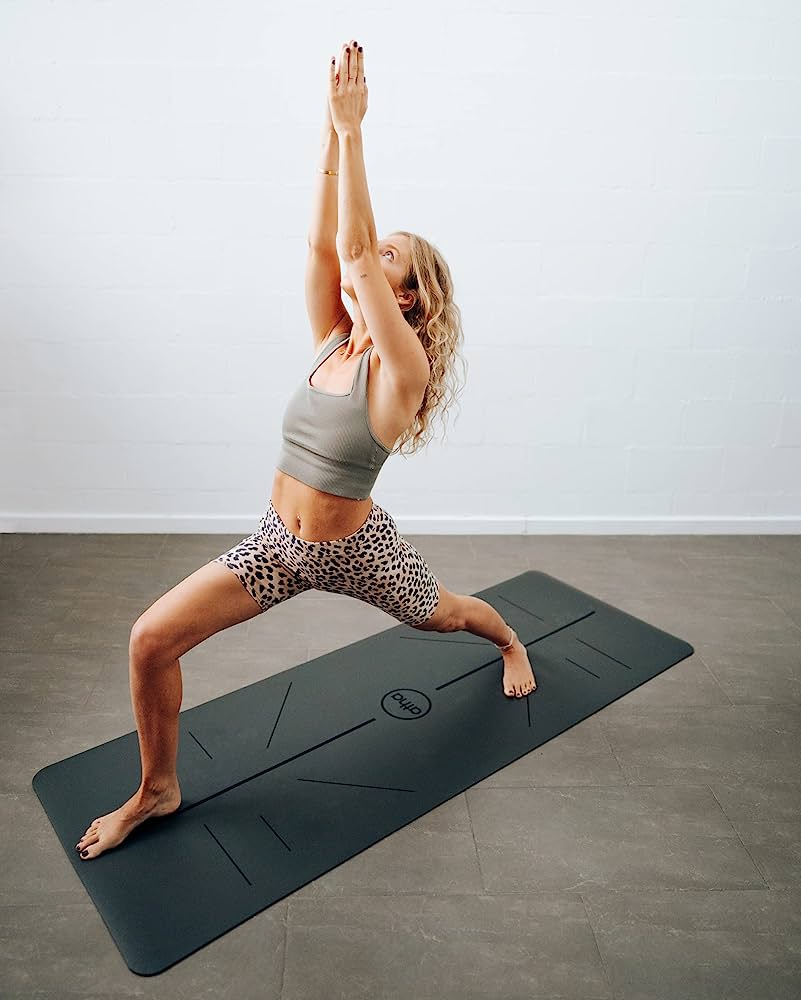
Yoga is a great way to stay fit, healthy, and relaxed. It is a form of exercise that not only helps in keeping one’s body in shape but also helps in maintaining a positive mindset. However, choosing the right yoga mat can be a challenging task, given the vast range of options available in the market. There are different types of yoga classes, and each one requires a specific type of yoga mat. In this article, we will be discussing how to choose a yoga mat for different types of yoga classes.
Hatha Yoga
Hatha yoga is a gentle form of yoga that involves slow and controlled movements. It is ideal for beginners and those who want to improve their flexibility and balance. When choosing a yoga mat for Hatha yoga, it is essential to look for a mat that is thick and provides good cushioning. The thick mat will help in supporting the joints and bones and prevent any injury. The mat should also be non-slip and offer good traction, as some of the poses in Hatha yoga require a lot of balance.
Vinyasa Yoga
Vinyasa yoga is a more challenging form of yoga that involves flowing movements and transitions. It is ideal for those who have a good level of flexibility and want to challenge themselves. When choosing a yoga mat for Vinyasa yoga, it is essential to look for a mat that is lightweight and provides good grip. The lightweight mat will help in easy movements, and the grip will help in maintaining balance during transitions. It is also a good idea to choose a mat that is moisture-resistant, as Vinyasa yoga can be quite sweaty.
Bikram Yoga
Bikram yoga is a form of hot yoga that involves performing yoga poses in a heated room that is usually between 90 and 105 degrees Fahrenheit. The heat helps in loosening the muscles and allows for deeper stretching. When choosing a yoga mat for Bikram yoga, it is essential to look for a mat that is moisture-resistant and offers good traction. The mat should be able to absorb sweat and prevent any slipperiness, which can cause injury. It is also important to choose a mat that is durable and can withstand the high temperatures of the Bikram yoga room.
Restorative Yoga
Restorative yoga is a gentle form of yoga that involves holding poses for an extended period. It is ideal for those who want to relax and de-stress. When choosing a yoga mat for Restorative yoga, it is essential to look for a mat that is thick and provides good cushioning. The thick mat will help in supporting the joints and bones and prevent any injury. The mat should also be non-slip and offer good traction, as some of the poses in Restorative yoga require a lot of balance.
Ashtanga Yoga
Ashtanga yoga is a more challenging form of yoga that involves a set sequence of movements and poses. It is ideal for those who have a good level of fitness and want to challenge themselves. When choosing a yoga mat for Ashtanga yoga, it is essential to look for a mat that is thick and provides good cushioning. The thick mat will help in supporting the joints and bones and prevent any injury. The mat should also be non-slip and offer good traction, as some of the poses in Ashtanga yoga require a lot of balance. It is also important to choose a mat that is durable and can withstand the wear and tear of regular practice.
Power Yoga
Power yoga is a more intense form of yoga that involves flowing movements and transitions. It is ideal for those who want to challenge themselves and improve their fitness level. When choosing a yoga mat for Power yoga, it is essential to look for a mat that is lightweight and provides good grip. The lightweight mat will help in easy movements, and the grip will help in maintaining balance during transitions. It is also a good idea to choose a mat that is moisture-resistant, as Power yoga can be quite sweaty.
Conclusion
Choosing the right yoga mat is essential for anyone serious about their yoga practice. Different types of yoga classes require different types of yoga mats, and it is essential to choose a mat that is suitable for the specific type of yoga class. When choosing a yoga mat, it is essential to consider factors such as thickness, cushioning, grip, moisture-resistance, and durability. By considering these factors, one can narrow down their choices and choose a yoga mat that will help them in achieving their fitness goals.

